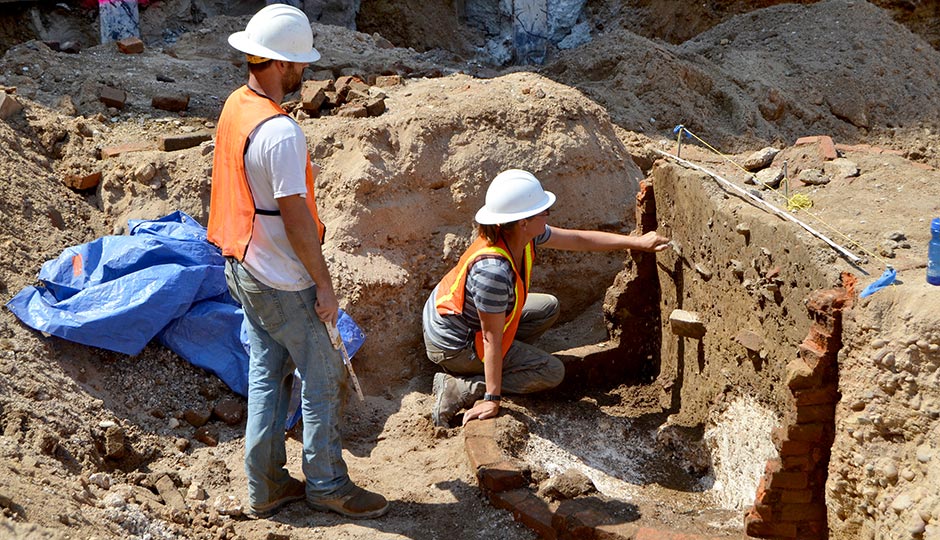Archaeologists Find Thousands of Artifacts in Old Philly Toilets

Archaeologists Kevin Bradley and Kathryn Wood excavate a privy at the site of the future Museum of the American Revolution in Old City. (Photo courtesy Museum of the American Revolution)
Workers excavating at the site of the future Museum of the American Revolution over the past few years found quite a few historical artifacts in a place you might not expect to look for them: In the toilet.
Before construction began, archaeologists excavated the site that used to be the Independence Living History Center. Archaeologists from John Milner Associates (which is now named Commonwealth Heritage Group) conducted fieldwork at the 3rd and Chestnut site from July through October 2014, and briefly again in the springs of 2015 and 2016.
The team excavated a well and 12 brick-lined privies — outhouse vaults that also collected garbage — and found more than 87,000 artifacts from the tiny rowhouses that once lined the site. The privies and well were sealed when newer houses were built on the site in the 19th century; those houses were knocked down to build the old visitor’s center in the 1970s.
“It seems only fitting that such a complete story of the evolution of the city should be found on the site of a future museum,” said Michael Quinn, president and CEO of the museum. “These artifacts provide a tangible tie to Philadelphia’s past and help us tell the stories of people who lived right here before, during, and after the Revolutionary War.”
Some of the artifacts from the excavation, which the archaeologists blogged about, will be on display in the new museum. They include the shattered pieces of an English delftware punch bowl (which has been reassembled), print type from the 18th century, tankards and wine bottles and a window pane with names and a saying scratched in it.
“Cities are constantly rebuilding themselves, and the construction of this new museum — right in the heart of the oldest part of Philadelphia — provided us with a rare opportunity to examine the things left behind by the people who lived and worked there, in order to learn about how the city began and how it changed,” said lead archaeologist Rebecca Yamin. “This buried record of the past touches on many significant changes in the city’s development, essentially creating a microcosm of Philadelphia from its very beginning to the present.”
The Museum of the American Revolution opens on April 19th, 2017.
Follow @dhm on Twitter.